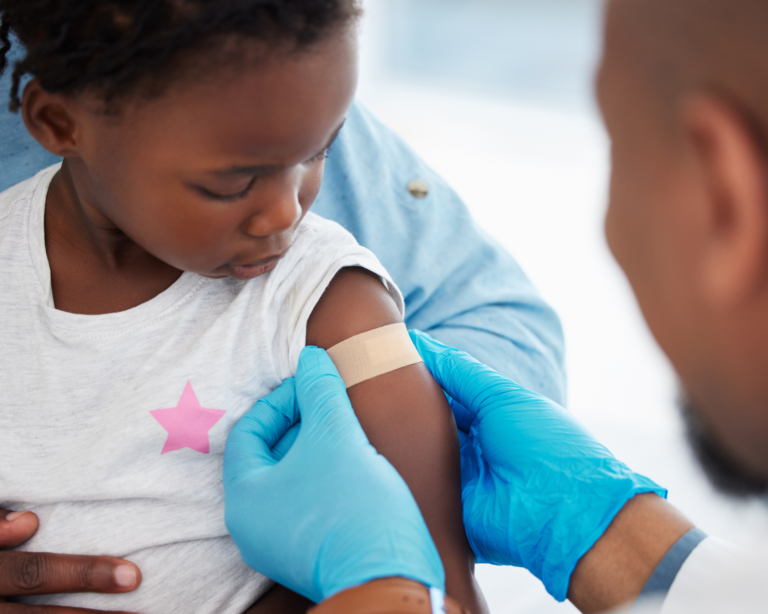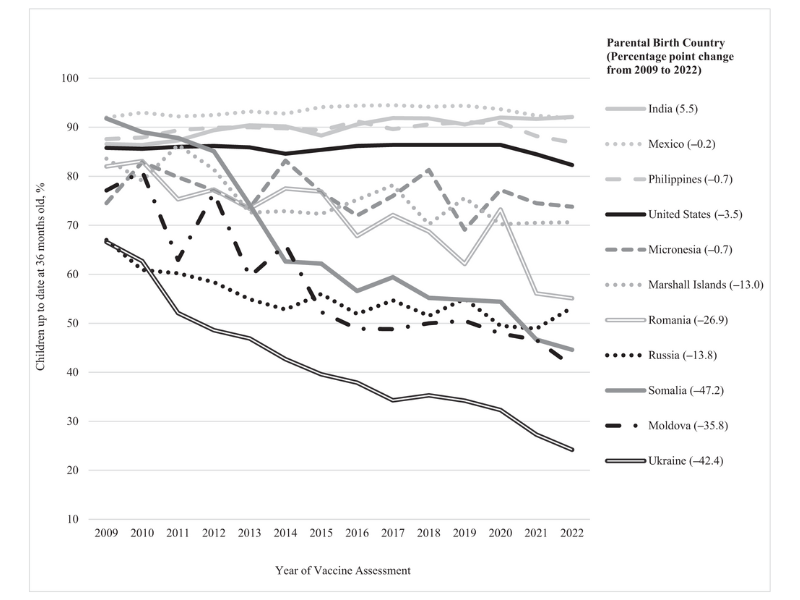Vaccine Gaps in Immigrant Communities
In Washington, some immigrant communities are at risk for vaccine-preventable diseases due to low and declining vaccination coverage.

Read Time: 2 minutes
Published:
Vaccine hesitancy—the delay or refusal to vaccinate oneself or one’s children—is common in immigrant communities. Over the past decade, anti-vaccine activists have targeted these populations, leading to a rise in hesitancy. The issue was compounded by recent COVID-19 vaccine-related controversies, including discriminatory practices by some state agencies against undocumented immigrants. Such challenges have led to under-vaccination within immigrant populations, heightening the risk of vaccine-preventable diseases for immigrant populations and the broader public.
Increasing vaccine access remains a priority for many states, with Washington taking a particular interest due to their sizable immigrant population. Immigrants constitute 26% of parents with children under 18 in the state. Moreover, Washington has experienced recent outbreaks of vaccine-preventable diseases, such as measles, mumps, and pertussis, highlighting the urgency of addressing gaps in vaccination.
Azadeh Tasslimi and collaborators analyzed data from the Washington State Immunization System and birth records to compare vaccination rates among children born to at least one immigrant parent versus those with two U.S.-born parents. The study included children born in Washington between 2006 and 2019. The researchers assessed up-to-date vaccine coverage at 36 months and seven years for measles, mumps, rubella (MMR); diphtheria, tetanus, pertussis (DTaP); and poliovirus.

The graph above illustrates vaccination coverage rates for the MMR vaccine at 36 months. Children with at least one parent born in India, Mexico, or the Philippines exhibited higher vaccination rates than those with both parents born in the United States. Comparatively, children born to at least one parent from Micronesia, the Marshall Islands, Romania, Russia, Somalia, Moldova, or Ukraine had lower MMR vaccine coverage than their counterparts with U.S.-born parents. Notably, there was a dramatic decrease in vaccine coverage among children with at least one Moldovan, Ukrainian, or Somalian parent (35.8%, 42.4%, and 47.2% decreases, respectively) between 2009 and 2022. Thus, leaving less than half of children in Washington of these ethnicities vaccinated in 2022.
Certain communities in Washington are at increased risk for vaccine-preventable diseases due to low and declining vaccination coverage. The implementation of community-specific vaccine initiatives to improve coverage rates among immigrant populations across the state is ongoing and still has a long way to go.



